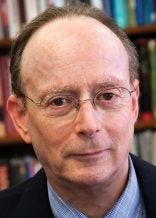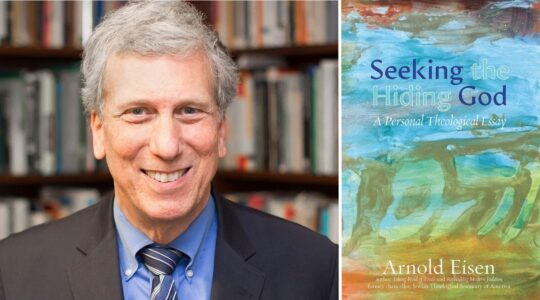Not surprisingly, there has already been a large wave of reactions to the first major national survey of American Jews in more than a decade, with its sobering, if not bleak, portrait of a community on the fast track toward assimilation.
The responses to the Pew Research Center’s Religion and Public Life Project report, based on interviews with nearly 3,500 Jews, tend to fall into one of three categories:
Oy Gevalt, We’re Doomed: With the study indicating that an increasing number of Jews, particularly among the young, are moving away from formal expressions of Judaism (22 percent say they have “no religion”), marrying out (at a rate of 58 percent overall and 71 percent among the non-Orthodox) and not raising Jewish children (two-thirds of the “no religion” Jews), it’s difficult not to come away from the extensive data with a sense of deep pessimism about the future.
Unless, of course, you believe that…
The Survey is Flawed: We are already seeing questions being raised and holes being poked in some of the many statistics and charts that are part of the Pew report.
From past experience we know that the small group of Jewish demographers who dominate the field tend to critique and counter-critique each other over these kinds of surveys. Sometimes their views are motivated by method, “SOMETIMES THEIR CRITICISM IS BASED ON CONFLICTING PHILOSOPHIES OF SURVEY METHODOLOGY,”) and sometimes by a mix of ideological and personal differences. It’s difficult for laymen to feel knowledgeable enough about the various arguments to weigh in intelligently. The result is that the findings tend to get marginalized; AS A RESULT, THE FINDINGS TEND TO BE IGNORED; most dramatically, the Jewish Federations of North America ceased its once-a-decade national Jewish population survey after 2001, at least in part because it felt the study was too expensive and controversial.
The Pew study was done independently, but several prominent Jewish leaders have, if not dismissed the findings altogether, asserted that their own knowledge, observations and/or instincts about American Jewry are so different from the study’s findings that the Pew numbers must be off.
Much of the skepticism stems from the views and practices of Orthodox and ultra-Orthodox Jews surveyed, indicating, for instance, that a small but telling percentage have Christmas trees at home or that more than one-third of ultra-Orthodox Jews believe one is not considered a Jew if he or she works on Shabbat.
These findings are so illogical that they are raising red flags about the credibility of the entire survey for some, despite the fact that Pew has a long and solid reputation for its research, which in this case was done by a group of highly respected experts, including those with a deep understanding of the American Jewish community.
Alan Cooperman, associate director of research at Pew, explained to me that “how respondents self-identify, religiously, in surveys seldom, if ever, lines up exactly with what their religious leaders or others might wish or expect.” He and other experts in the field note that people can differ on how they hear or interpret survey questions, and there is a certain degree of what researchers call “noise,” or randomness, in such studies.
I think it would be a major mistake, tinged with denial, to dismiss the findings of this exhaustive study because of these secondary findings. I subscribe to the school of…
Support the New York Jewish Week
Our nonprofit newsroom depends on readers like you. Make a donation now to support independent Jewish journalism in New York.
Step Back and Consider the Primary Trends: More than 20 years ago the National Jewish Population Survey concluded that the intermarriage rate had climbed to 52 percent.
That is the one statistic, out of many hundreds, that is remembered today. The Jewish demographers are still arguing over the accuracy of the number, but whether it was a bit high or low, the primary message was that assimilation was on the rise.
It did galvanize the community to focus on efforts to counter the trend, and beyond the rhetoric of “Jewish continuity” that emerged, there were specific programs put in place that had positive results, like the push to create and sustain more non-denominational, community day schools.
My takeaway from the Pew research, which is consistent with the chief findings of the New York Jewish Population Survey of 2012, commissioned by UJA-Federation of New York, is that the signs of erosion of American Jewish identity from within are too strong to ignore. They translate to less connection to Jewish practice and observance among younger Jews; less attachment to synagogues, and establishment Jewish organizations, including federations; and more tolerance and acceptance for marrying outside the faith.
If you separate out the Orthodox community, which remains strong in terms of Jewish identity and involvement, the signs of rapid assimilation are even more dramatic.
Of course there are hopeful notes from the study, including the surprisingly large number of Jews who express pride in being Jewish, as well as those who feel attached to Israel and who have been to Israel. And we have to remember that surveys can tell us only so much, and that people’s views and identities do not fit into neat, preconceived categories. Young people, especially, see themselves as having many identities, not just one or two, and they tend to express their Jewishness through doing rather than joining.
I was reminded of this the other day when Knesset member Ruth Calderon, the longtime Jewish educator and now a symbol of the possi
The New York Jewish Week brings you the stories behind the headlines, keeping you connected to Jewish life in New York. Help sustain the reporting you trust by donating today.





